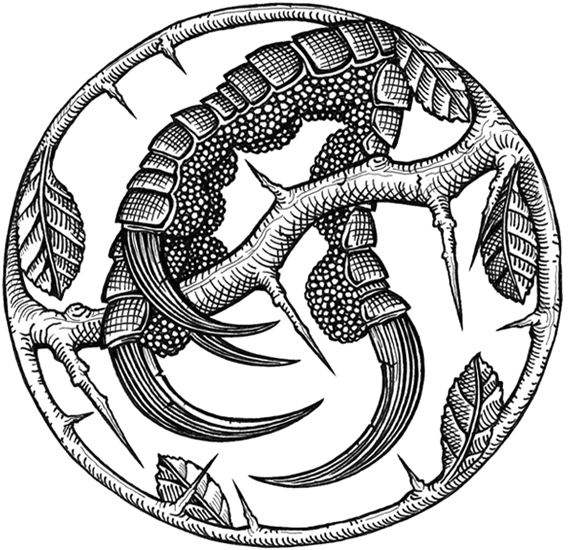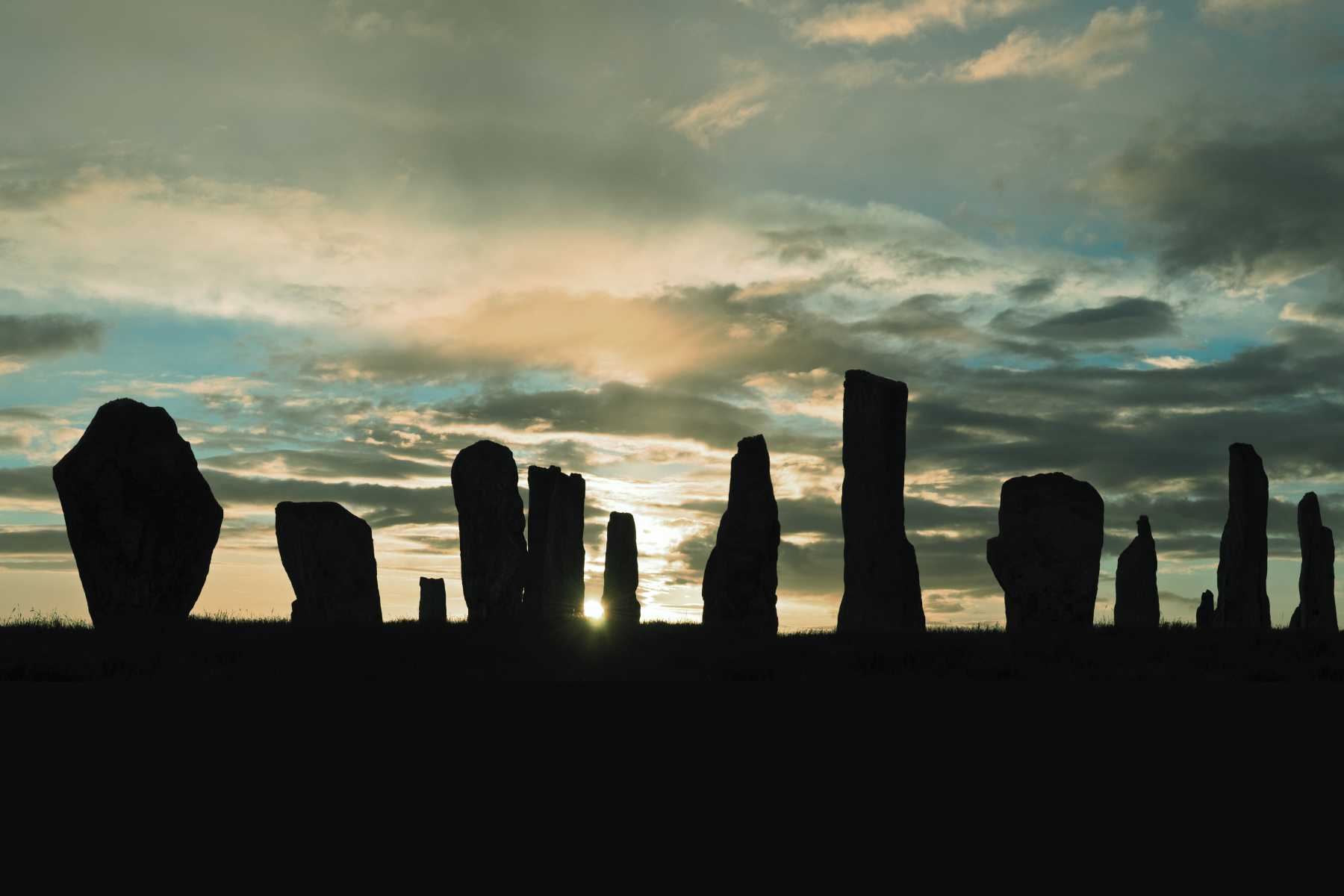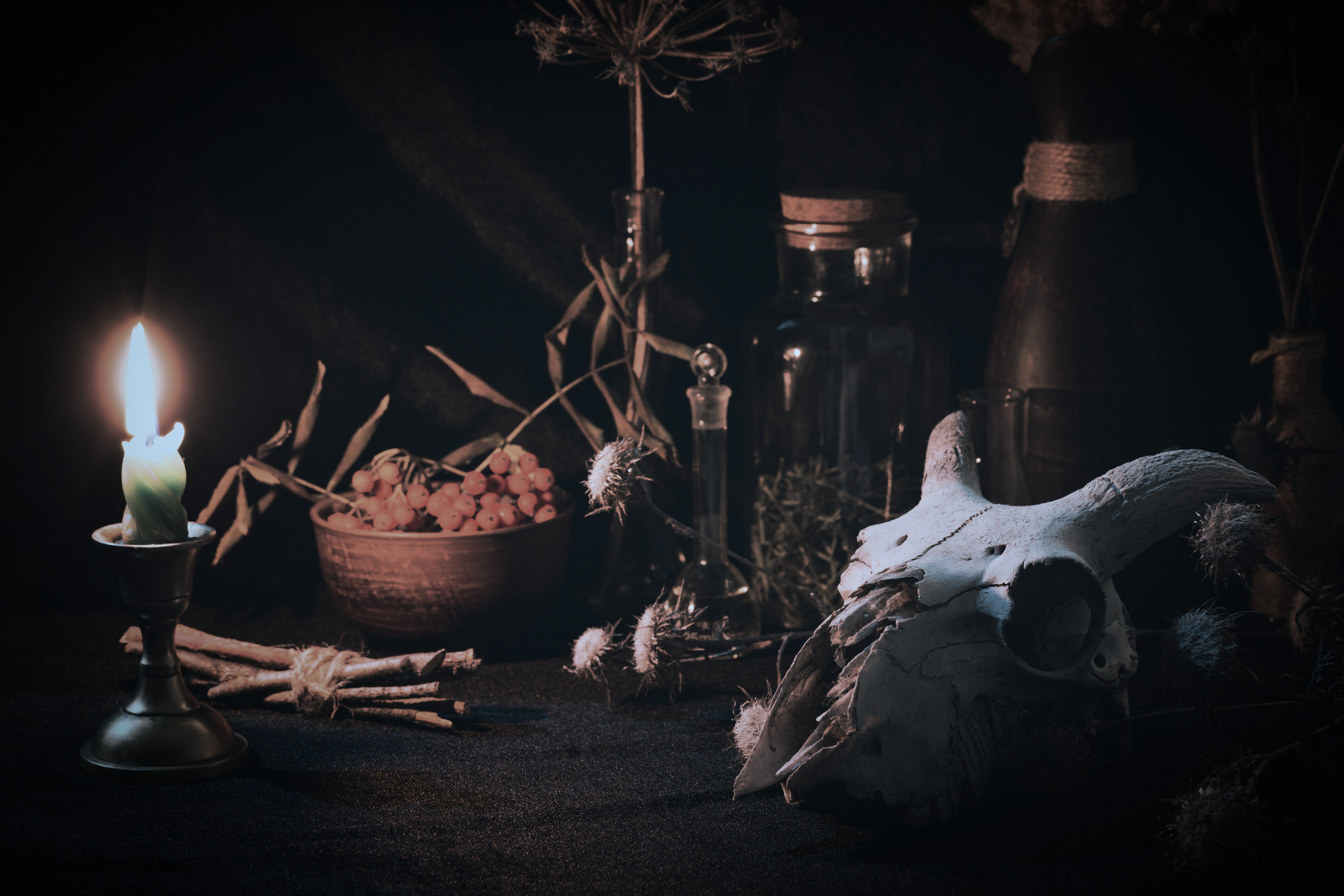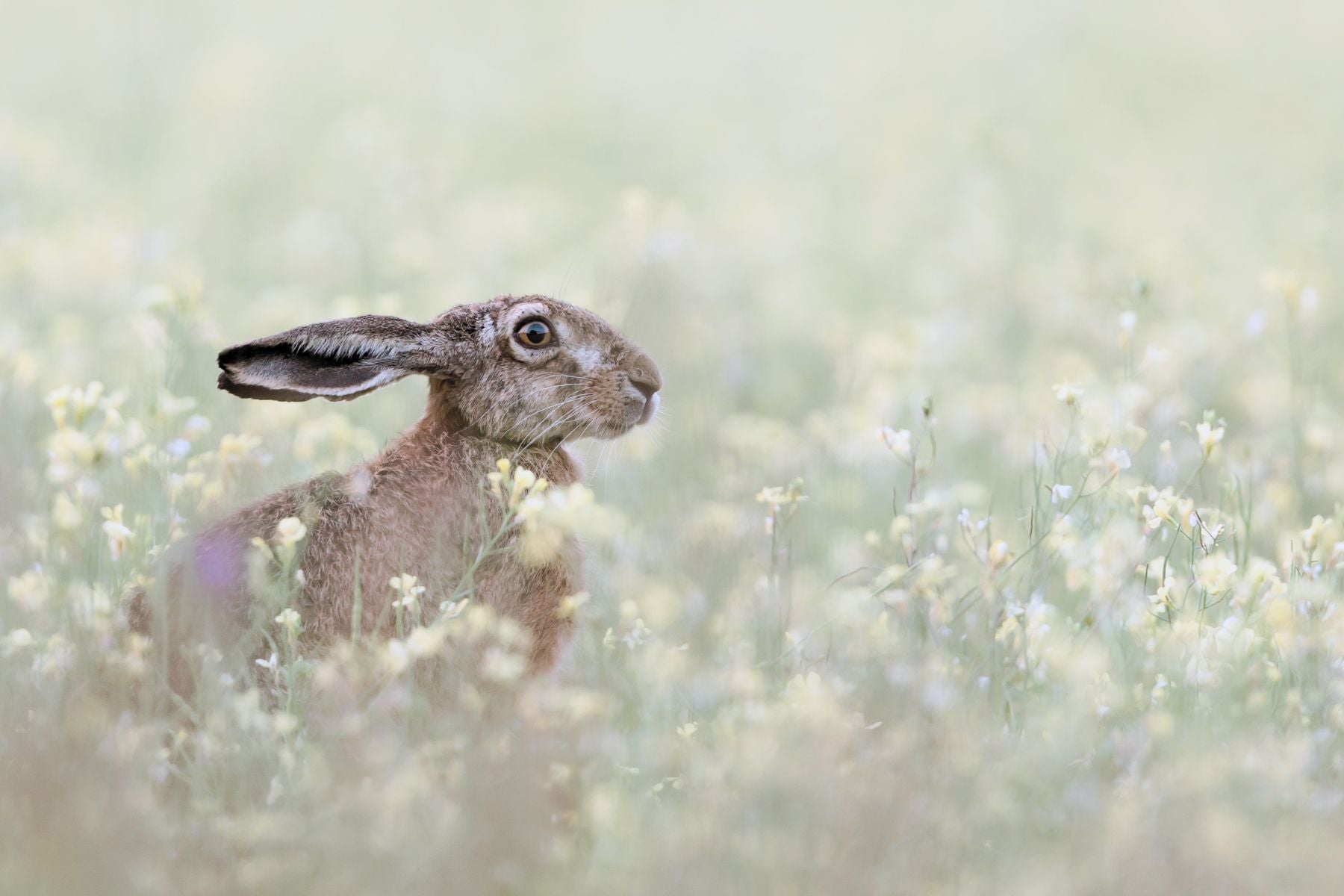
How to Celebrate Ostara: The Spring Equinox
When is The Spring Equinox in 2025?
In 2025, the Spring Equinox falls on Thursday, 20 March 2025. This day marks the Spring Equinox, a sacred time of balance and renewal. As nature awakens, Ostara rituals honour fertility, rebirth, and the return of life’s vibrant energy. Celebrating Ostara, the Spring Equinox, is a wonderful opportunity to align yourself with nature’s seasonal rhythms.
Wondering how to celebrate Ostara in your own home? Whether you're looking for traditional Ostara rituals, altar decoration ideas, or modern ways to welcome spring, this guide will help you connect deeply with the festival’s rich symbolism. From egg decorating to planting seeds, embrace this magical celebration and discover how Ostara can inspire your personal journey into the brighter half of the year.
What is Ostara and Why Do We Celebrate the Spring Equinox?
Ostara is an ancient pagan festival that celebrates the coming of Spring. Ostara traces its roots to ancient pagan traditions, particularly those of Germanic and Celtic origin. Named after the Germanic goddess Eostre, whose name evokes the dawn and the burgeoning light of spring, Ostara embodies the cyclical rhythm of nature's rebirth. In pre-Christian times, communities across Europe gathered to honour Eostre and celebrate the vernal equinox, heralding the return of warmth and fertility to the land.
At its core, Ostara embodies the triumph of light over darkness, symbolised by the increasing daylight and the rebirth of the natural world. The vernal equinox marks a moment of perfect balance, where day and night are in harmonious alignment. This symbolic equilibrium mirrors the inner balance we strive to achieve in our lives, as we navigate the ever-shifting currents of existence. Ostara's symbols, eggs, hares, flowers, serve as reminders of the eternal cycle of life, death, and rebirth, inspiring us to embrace change, growth, and transformation.

When is Ostara?
Ostara is typically around March 20th or 21st in the Northern Hemisphere and traditionally celebrated on the vernal equinox. This astronomical event marks the moment when day and night are of equal length, signalling the official arrival of spring. However, the exact date may vary slightly depending on the year and location. Regardless of the precise timing, Ostara is a time to honour the changing seasons, embrace the renewal of life, and celebrate the return of light to the land.
Ostara, also known as the Vernal Equinox, is a celebration that dates back to ancient times. It marks the beginning of spring when the earth awakens from its long winter slumber and bursts forth with new life.
What does the word Ostara mean?
The word "Ostara" derives from Germanic paganism and is believed to be named after the Germanic goddess Eostre or Ostara, who symbolises fertility, renewal, and the dawn. Eostre was associated with the coming of spring and the resurgence of life in the natural world. The celebration of Ostara predates Christianity and was observed by ancient Germanic tribes as a way to honour the changing seasons and the cycles of nature. Today, Ostara continues to be celebrated by modern pagans as a time of spiritual renewal and connection to the earth.
Spring equinox traditions
The Spring Equinox, also known as Ostara, is rich with meaningful traditions celebrating balance, renewal, and growth. Historically, people honoured this sacred time by decorating altars with eggs, symbolic of fertility and new beginnings, and rabbits, representing abundance. Rituals often included planting seeds as a powerful gesture of intention-setting and rebirth. Lighting candles symbolised the returning warmth and sunlight. The Spring Equinox represents balance between darkness and light, making it an ideal time for reflection, gratitude, and setting intentions.
Traditionally, the Spring Equinox was honoured with rituals like egg decorating, symbolising new beginnings and fertility. Modern Ostara celebrations blend ancient customs with personal rituals, encouraging mindful walks in nature, spring cleaning rituals, and crafting spring-inspired talismans. These traditions offer beautiful ways to reconnect with nature’s cycles, inviting fresh energy, renewal, and optimism into our lives.
The history and folklore of Ostara
Central to the folklore of Ostara is the enigmatic figure of the Goddess Ostara, also known as Eostre in Germanic traditions. She embodies the essence of spring, fertility, and renewal, her name evoking the dawn and the burgeoning light of the season. According to legend, Ostara was revered by ancient cultures across Europe, who celebrated her divine influence during the vernal equinox.
In Germanic mythology, Ostara was believed to be accompanied by a hare, symbolising fertility, abundance, and the promise of new life. This association is echoed in Celtic lore, where the hare serves as a messenger of the goddess, heralding the arrival of spring. Through rituals and offerings, communities honoured Ostara, seeking her blessings for a bountiful harvest and the renewal of the earth's vitality.
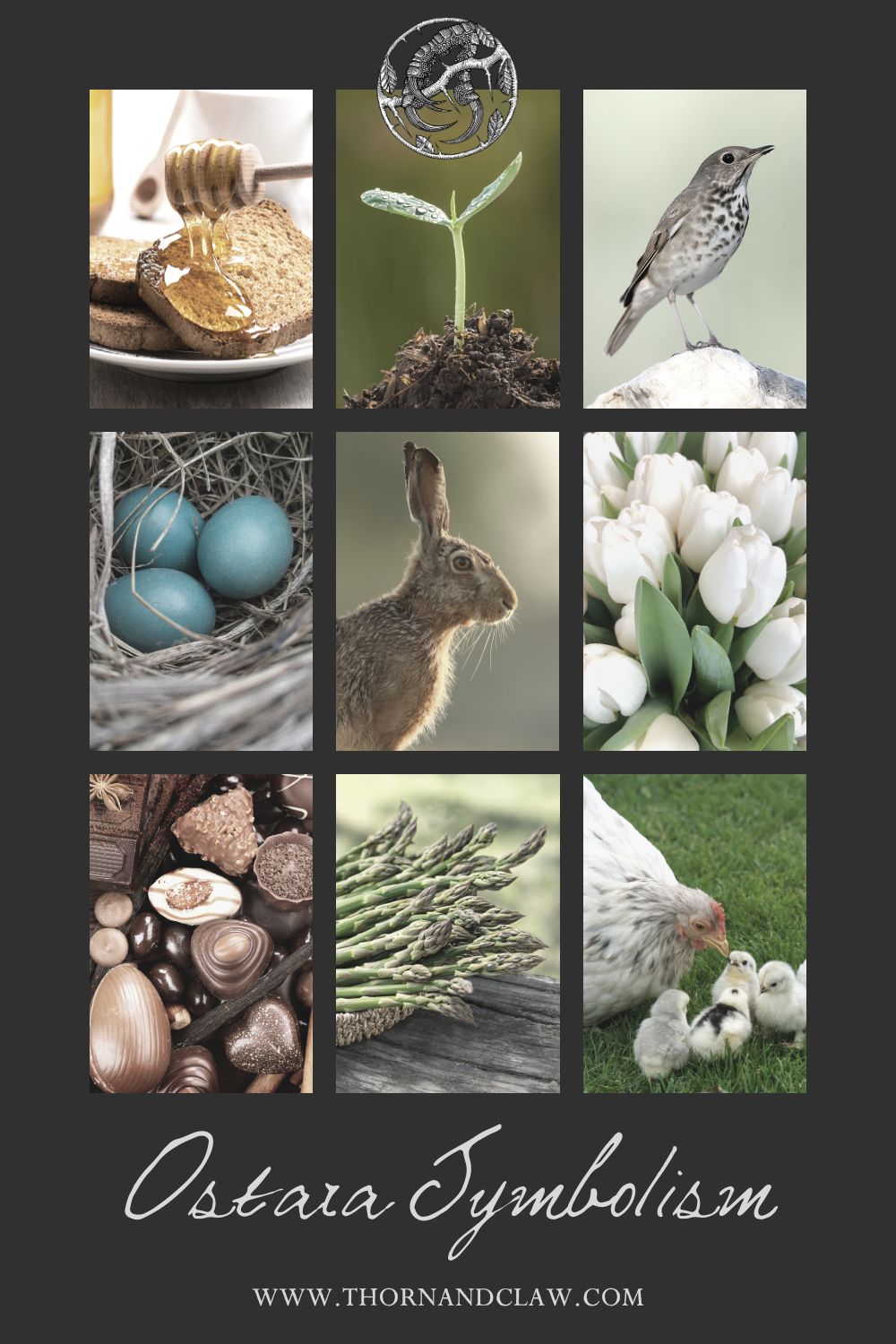
Ostara symbolism, meanings and associations
-
Plants and Herbs: Ostara is intertwined with the emergence of new life, symbolised by the blooming of spring flowers such as daffodils, tulips, and crocuses. These vibrant blossoms represent renewal, growth, and the awakening of the earth from its winter slumber.
-
Colours: The palette of Ostara reflects the hues of spring, soft pastels, vibrant greens, and delicate shades of yellow and pink. These colours evoke the freshness of new beginnings and the gentle transition from winter's dormancy to the vitality of spring.
-
Animals: At Ostara, the hare takes centre stage as a symbol of fertility, abundance, and the playful energy of spring. Its presence reminds us of the earth's fertile potential and the boundless creativity inherent in the natural world. Additionally, songbirds add their melodious voices to the chorus of spring, symbolising renewal, joy, and the return of light and warmth.
- Food: Traditional Ostara food is abundant with seasonal delights, including eggs, fresh greens, and dairy products. Eggs, in particular, hold profound symbolism, representing fertility, rebirth, and the potential for new growth. Incorporating these foods into Ostara celebrations honours the cycle of life and the abundance of the earth.
Spring Equinox altar ideas - How to create an Ostara altar
To make an Ostara altar, adorn your space with spring flowers like daffodils, tulips, and crocuses, symbolising renewal and the awakening of the earth. Embrace the soft hues of spring by incorporating pastel colours such as pale yellows, greens, pinks, and blues into your altar decorations. Include symbols of fertility and growth, such as eggs, seeds, and nests, to honour the fertile energy of the season.
Pay homage to the goddess Ostara by incorporating images or statues of her, symbolising the divine feminine and the renewal of life. Offer seeds, milk, cream, grains or eggs as gratitude.
How can I celebrate Ostara?
To celebrate Ostara is to embrace renewal and growth, to welcome the return of warmth and fertility to the land. Through rituals, gatherings, and acts of creativity, we honour the cycles of nature and connect with the spirit of the season, infusing our lives with the promise of new beginnings.
Modern Ways to Celebrate Ostara at Home
Celebrating Ostara at home offers beautiful opportunities to welcome spring in personalised, meaningful ways. Simple rituals, like decorating eggs with intentions or planting herbs and flowers indoors, help you connect deeply to nature’s renewal. Create a seasonal altar featuring symbols like rabbits, eggs, spring blooms, and candles, honouring the balance of the equinox. Mindful journaling sessions, gratitude rituals, or peaceful nature walks can enrich your celebration, offering a modern twist on traditional practices. Even preparing a spring-inspired meal or crafting Ostara-themed decorations can elevate your day, helping you embrace the fresh energy, abundance, and optimism this magical festival inspires.
Planting Seeds on Ostara
Embrace the ancient tradition of sowing seeds as a symbolic gesture of planting intentions for the season ahead. Choose seeds that resonate with your aspirations and dreams, whether it be for personal growth, abundance, or creativity. As you sow each seed into the fertile earth, visualise your intentions taking root and blossoming into fruition, aligning with the natural cycles of growth and renewal.
Ostara feast ideas
Ostara is a time of abundance, and what better way to celebrate than with an Ostara feast? Traditionally, spring vegetables such as asparagus, peas, and fiddleheads are served alongside fresh herbs and light meats like lamb. Breads and cakes made with eggs and honey are also popular choices. As you prepare your feast, take time to reflect on the blessings in your life and express gratitude for the abundance of the season. Gather with loved ones to share in the bounty of the earth, celebrating the nourishing gifts of the season and the bonds of community that sustain us through life's cycles.
Wear a symbolic Ostara talisman
Adorning jewellery possesses the power to become meaningful personal ritual, linking you intimately to the rhythms of the seasons and the rich tapestry of folklore entwined with them. When you wear a symbol representing that which you seek to honour, it serves as a tangible touchstone for your aspirations and intentions. Wearing symbolic Ostara jewellery mirrors the act of adorning a sacred altar, imbuing you with the essence of ritualistic reverence. Through this ceremonial practice, you transform into a living embodiment of homage to the season.
SKERA - ROSE THORN EARRINGS IN SOLID STERLING SILVER
CAILLEACH - BLACKTHORN NECKLACE IN SOLID STERLING SILVER
Blackthorn is one of the first plants to bloom in early spring, and their delicate white flowers can almost look like snow. This Blackthorn pendant is hand finished to create detailed shadows and highlights, accentuating all the intricate textures of the natural casting.
Rituals for the Spring Equinox
The Spring Equinox is a time of purification and renewal, and many people choose to cleanse their homes and sacred spaces during this time. For an Ostara ritual, refresh and renew your home, throw open your windows and let the warming air flow from room to room. Clean the spaces you frequent the most, and rid your home of dying plants and stale foods. Wash your windows and mirrors to flood your home with the growing light of the sun. Burn or discard anything stagnant or decaying. Cleanse your physical self - soak in a salt bath dressed in spring flowers or fresh foliage. Honour your body with nourishing foods throughout the day. As you cleanse your space, visualise any negative or stagnant energy being cleared away, making room for positive and uplifting energy to enter.
Spring Equinox Crafts and Activities to Welcome Spring
Crafting during the Spring Equinox can help you connect to the natural world, inspiring personal growth and renewal. Create decorative eggs by naturally dyeing them with herbs and flowers, symbolising fertility and new beginnings. Try making floral wreaths or Ostara garlands to adorn your home, embracing the season’s blooming beauty. Plant seeds or build miniature herb gardens as a symbolic ritual of personal growth. Craft simple candles infused with essential oils to celebrate the return of sunlight. These mindful activities encourage reflection, creativity, and connection to nature, enhancing your Ostara celebrations and bringing vibrant spring energy into your home.
Connecting with Nature for the Spring Equinox
Embrace the spirit of Ostara by connecting with the natural world and immersing yourself in the beauty of spring's awakening. Take a stroll through a blossoming garden or wooded grove, allowing yourself to be fully present in the sights, sounds, and scents of the season. Commune with the elements—earth, air, fire, and water—through outdoor rituals or meditations, fostering a deep sense of connection and harmony with the earth and all its inhabitants.
As you celebrate Ostara inspired by folklore and historic traditions, may you find yourself deeply attuned to the rhythms of nature and the magic of the season, embracing the spirit of renewal and growth in all aspects of your life. Ostara is a time of renewal and rebirth, and there are many traditional ways to celebrate this powerful time of year. Whether you choose to decorate eggs, plant seeds, feast with friends and family, or cleanse your space, there are endless ways to connect with the energy of spring and embrace the new beginnings it brings.
FAQs about Ostara and the Spring Equinox
Q: When is Ostara, the Spring Equinox, celebrated?
A: Ostara, or the Spring Equinox, is celebrated around March 20th-23rd each year, marking the official beginning of spring when daylight and darkness are in balance.
Q: What rituals are associated with the Spring Equinox?
A: Common Spring Equinox rituals include planting seeds, decorating eggs, creating nature-inspired altars, lighting candles, and enjoying mindful walks in nature.
Q: What does the Spring Equinox symbolise in Ostara celebrations?
A: In Ostara traditions, the Spring Equinox symbolises balance, renewal, fertility, new beginnings, and nature’s awakening from winter’s slumber.
Q: How can I decorate my altar for the Spring Equinox and Ostara?
A: Decorate your altar with spring flowers, eggs, candles, rabbit symbols, crystals, and colours representing spring and rebirth, such as pastels and fresh greens.
Q: How can I celebrate the Spring Equinox at home?
A: Celebrate at home by performing rituals like seed planting, egg painting, creating floral wreaths, spring cleaning, or simply taking time for mindful reflection on balance and renewal.
Further Reading & Resources for Ostara and the Spring Equinox
Delve deeper into the magic, traditions, and symbolism of Ostara by exploring these carefully selected internal and external resources. Whether you're curious about the historical significance of the Spring Equinox, looking for seasonal rituals, or searching for inspiration for your Ostara altar, these trusted sources will guide you.
For readers in the Southern Hemisphere, now celebrating the Autumn Equinox (Mabon), you can explore my guide on How to Celebrate the Autumn Equinox.
Discover more seasonal magic and deepen your connection with nature’s cycles.
-
Blackthorn Meaning & Symbolism
Discover the rich folklore and protective symbolism associated with the Blackthorn tree. -
Thorn & Claw Jewellery Collection
Browse our handcrafted jewellery inspired by nature, folklore, and seasonal celebrations.
-
History.com – Spring Equinox
Gain deeper historical insights into the traditions and astronomical significance of the Spring Equinox. -
Farmer’s Almanac – Celebrating the Spring Equinox
Learn more about seasonal rituals, gardening tips, and ways to honour this special time of year.
Celebrate Ostara with Nature-Inspired Talismans and Seasonal Rituals
Ready to welcome the magic of Ostara into your life? Explore our handcrafted spring-inspired talismans, perfect for your altar or rituals. Don't forget to subscribe to my newsletter for seasonal rituals, folklore, and exclusive updates to inspire your path through the Wheel of the Year.
